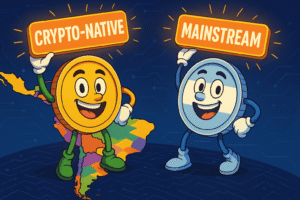Blockchain and Education: How It Can Improve Record-Keeping and Credential Verification

Blockchain technology has been gaining momentum since its inception in 2008. Its decentralized and immutable nature makes it a perfect fit for record-keeping, and the education sector can leverage this technology to streamline the process of record-keeping and credential verification. In this article, we will discuss how blockchain technology can revolutionize the education sector and improve record-keeping and credential verification.
What is Blockchain Technology?
Blockchain technology is a decentralized and distributed ledger that is maintained by a network of nodes. Each node has a copy of the ledger, and any changes made to the ledger are validated by the network. This validation ensures that the data stored on the blockchain is immutable, transparent, and secure.
Blockchain technology is often associated with cryptocurrencies, but it has far-reaching implications beyond the financial sector. The technology can be used to streamline various industries, including healthcare, supply chain management, and education.
The Need for Improved Record-Keeping and Credential Verification in Education
The education sector has traditionally relied on paper-based records to maintain student data, including grades, attendance, and personal information. This method of record-keeping is inefficient, error-prone, and time-consuming. Moreover, the traditional method of verifying student credentials is also cumbersome and can lead to delays in the hiring process.
There is a need for a more efficient and secure method of record-keeping and credential verification in the education sector. This is where blockchain technology can play a significant role.
How Blockchain Technology Can Improve Record-Keeping and Credential Verification in Education
- Immutable Records
Blockchain technology can provide an immutable record of student data. This means that once data is entered on the blockchain, it cannot be altered or deleted. This ensures the accuracy and integrity of student records and eliminates the possibility of fraud or tampering.
- Decentralized Storage
Blockchain technology allows for decentralized storage of data, which means that the data is not stored in a single location. Instead, the data is stored on multiple nodes in the network, ensuring that the data is always available and cannot be lost due to a single point of failure.
- Increased Transparency
Blockchain technology provides increased transparency in record-keeping. Since the blockchain is a distributed ledger, all nodes in the network have access to the same information. This ensures that all stakeholders have access to the same information, which promotes transparency and accountability.
- Automated Verification
Blockchain technology can automate the process of verifying student credentials. Since the data is stored on the blockchain, employers can easily verify the authenticity of student credentials without the need for manual verification. This can significantly reduce the time and cost associated with the verification process.
- Digital Badges
Blockchain technology can enable the creation of digital badges. Digital badges are digital representations of student achievements, skills, and knowledge. These badges can be stored on the blockchain, and employers can easily verify the authenticity of these badges. This can provide a more comprehensive picture of a student’s skills and achievements and can help employers make better hiring decisions.
Challenges and Limitations of Blockchain Technology in Education
While blockchain technology has the potential to revolutionize the education sector, there are several challenges and limitations that need to be addressed.
- Integration with Existing Systems
Integrating blockchain technology with existing systems can be a challenge. Many educational institutions have legacy systems that are not compatible with blockchain technology. This can make it difficult to implement blockchain technology in these institutions.
- Adoption and Awareness
There is a lack of awareness and understanding of blockchain technology in the education sector. Many educational institutions and stakeholders are not aware of the potential benefits of blockchain technology. This can lead to a lack of adoption of the technology.
- Security Concerns
While blockchain technology is inherently secure, there is always a risk of security breaches. Educational institutions need to ensure that the data stored on the blockchain is protected from unauthorized access.
- Cost
Implementing blockchain technology can be costly, and educational institutions may not have the resources to invest in this technology.
Conclusion
Blockchain technology has the potential to revolutionize the education sector by improving record-keeping and credential verification. The technology provides immutable records, decentralized storage, increased transparency, automated verification, and digital badges. However, there are also challenges and limitations that need to be addressed, such as integration with existing systems, adoption and awareness, security concerns, and cost.
Despite these challenges, educational institutions should explore the potential of blockchain technology to improve the efficiency, accuracy, and security of record-keeping and credential verification. By leveraging this technology, educational institutions can provide students with a more comprehensive and secure representation of their achievements and skills, and employers can make better hiring decisions. Ultimately, the adoption of blockchain technology in the education sector can help improve the quality of education and provide students with better opportunities for success.

I have been in the industry for over 5 years. I know all the latest news and what is going on with different coins. I write about Bitcoin, Ethereum, Litecoin, and more.








